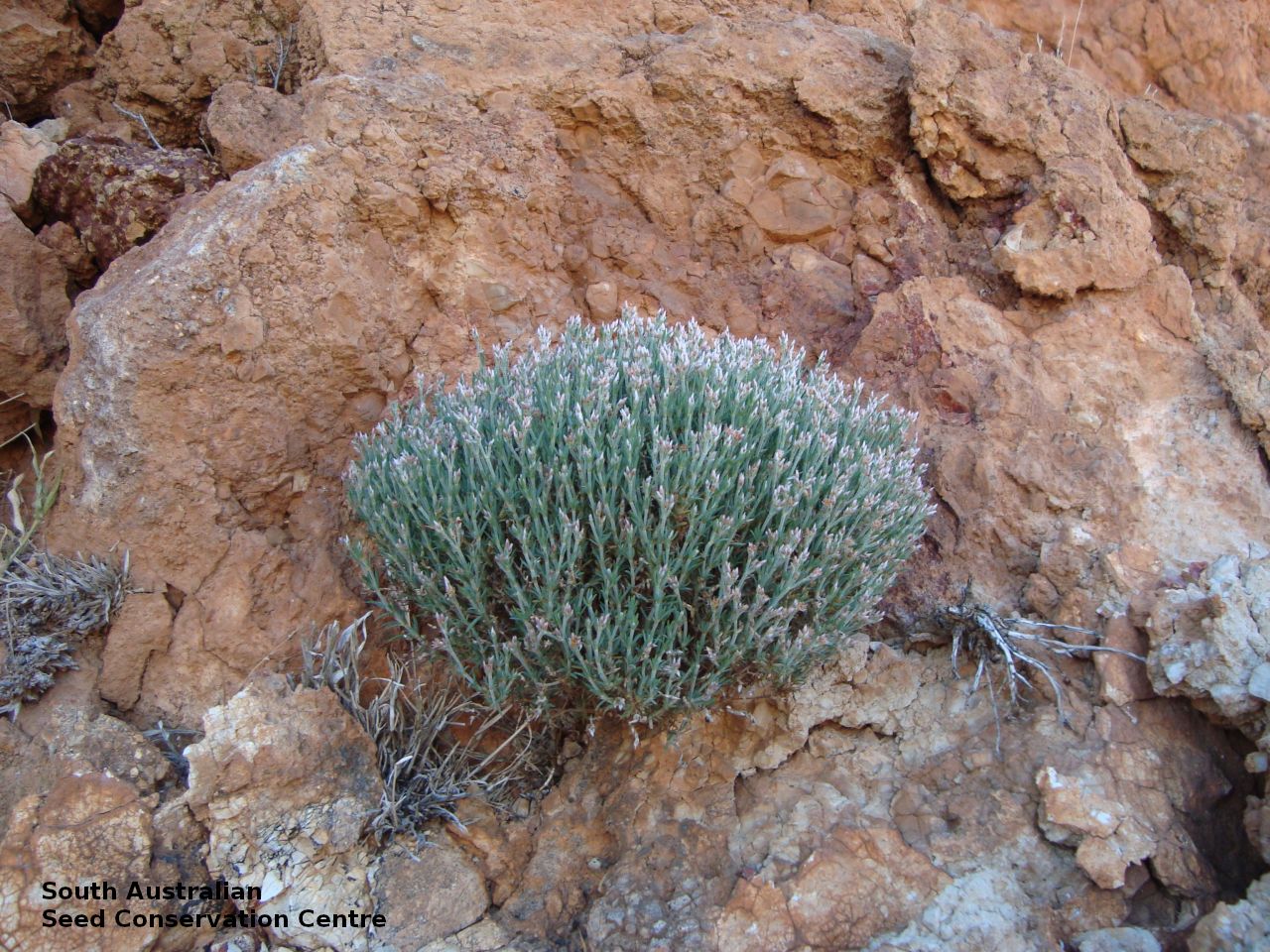
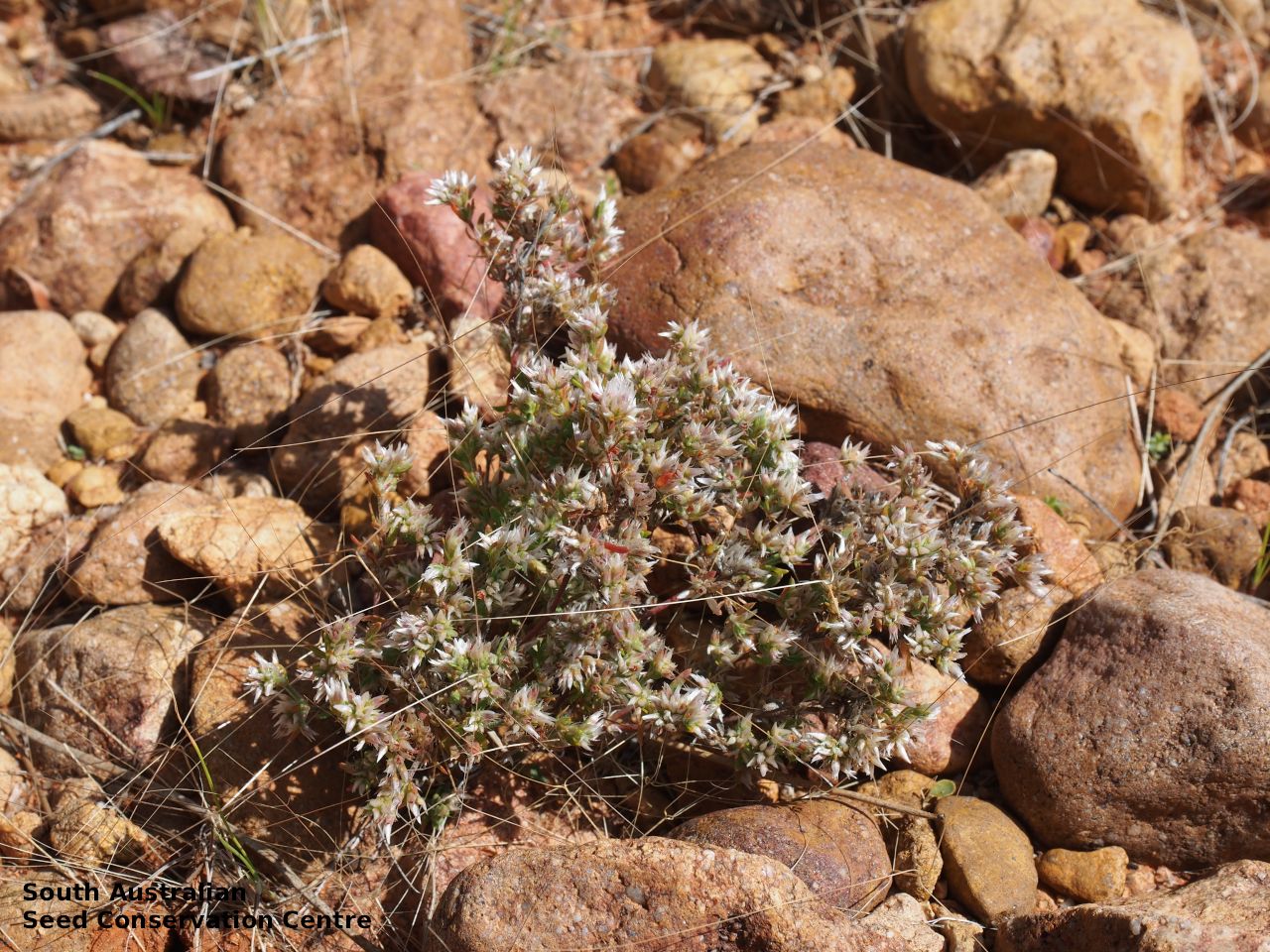

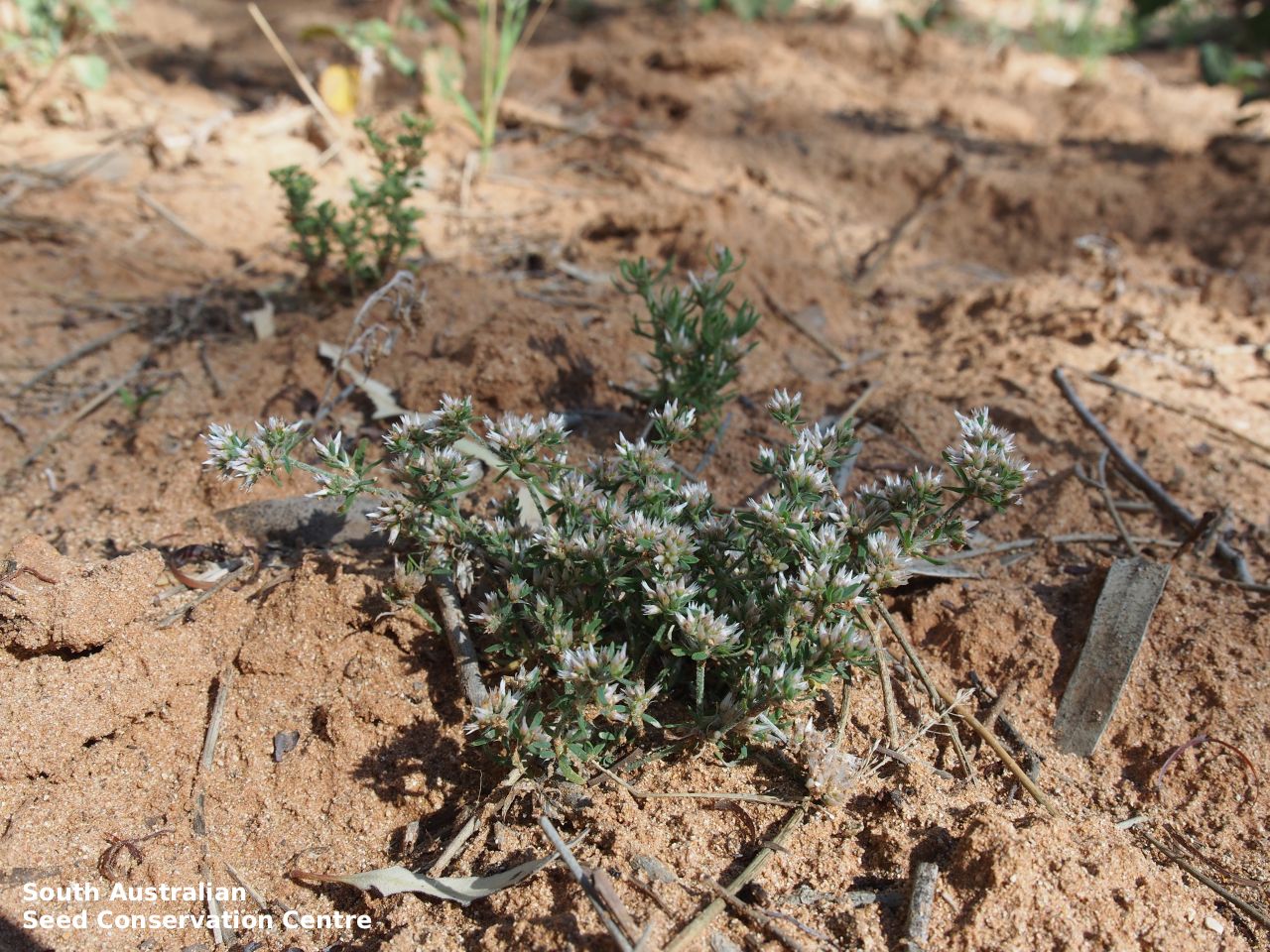

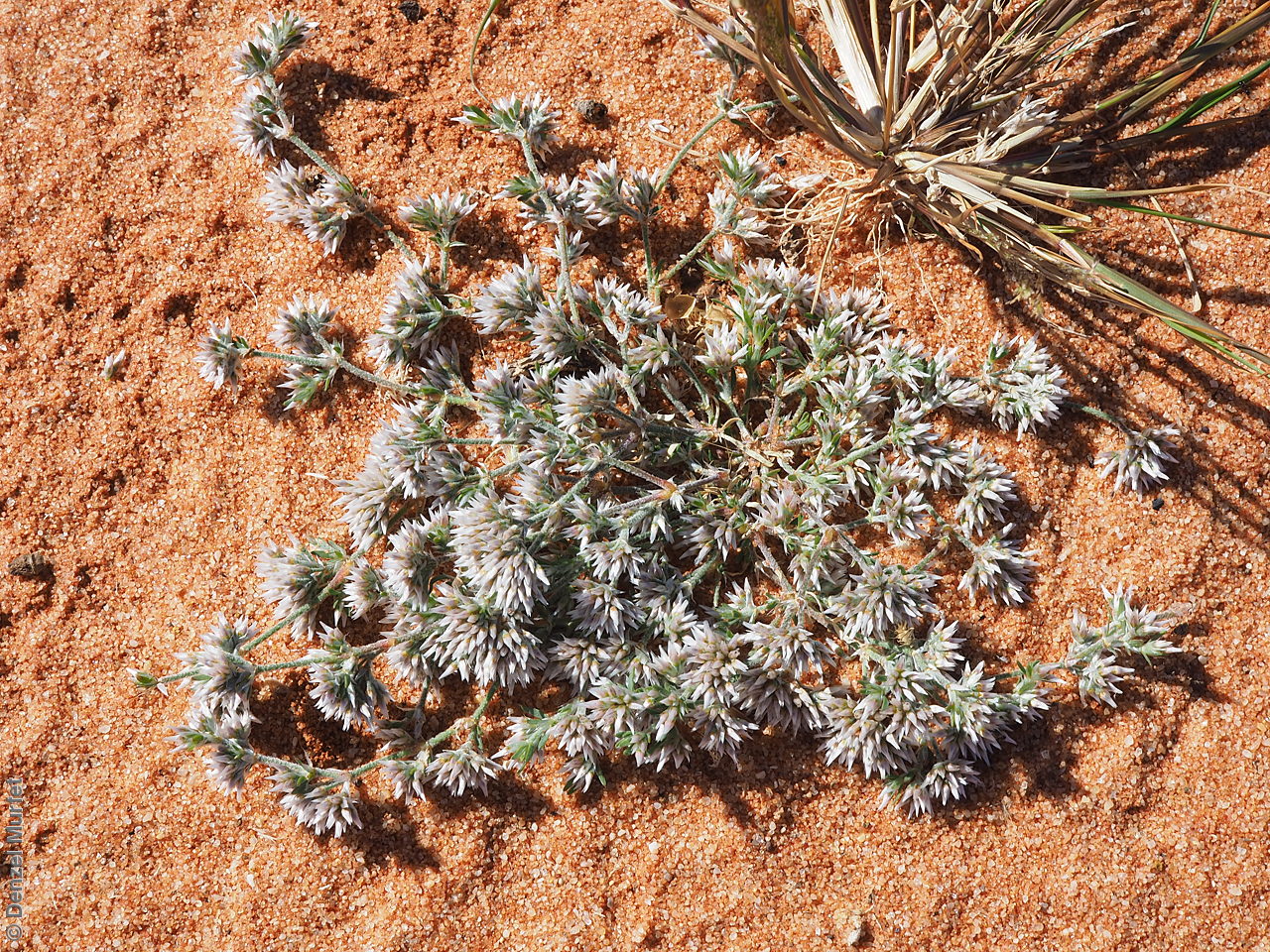
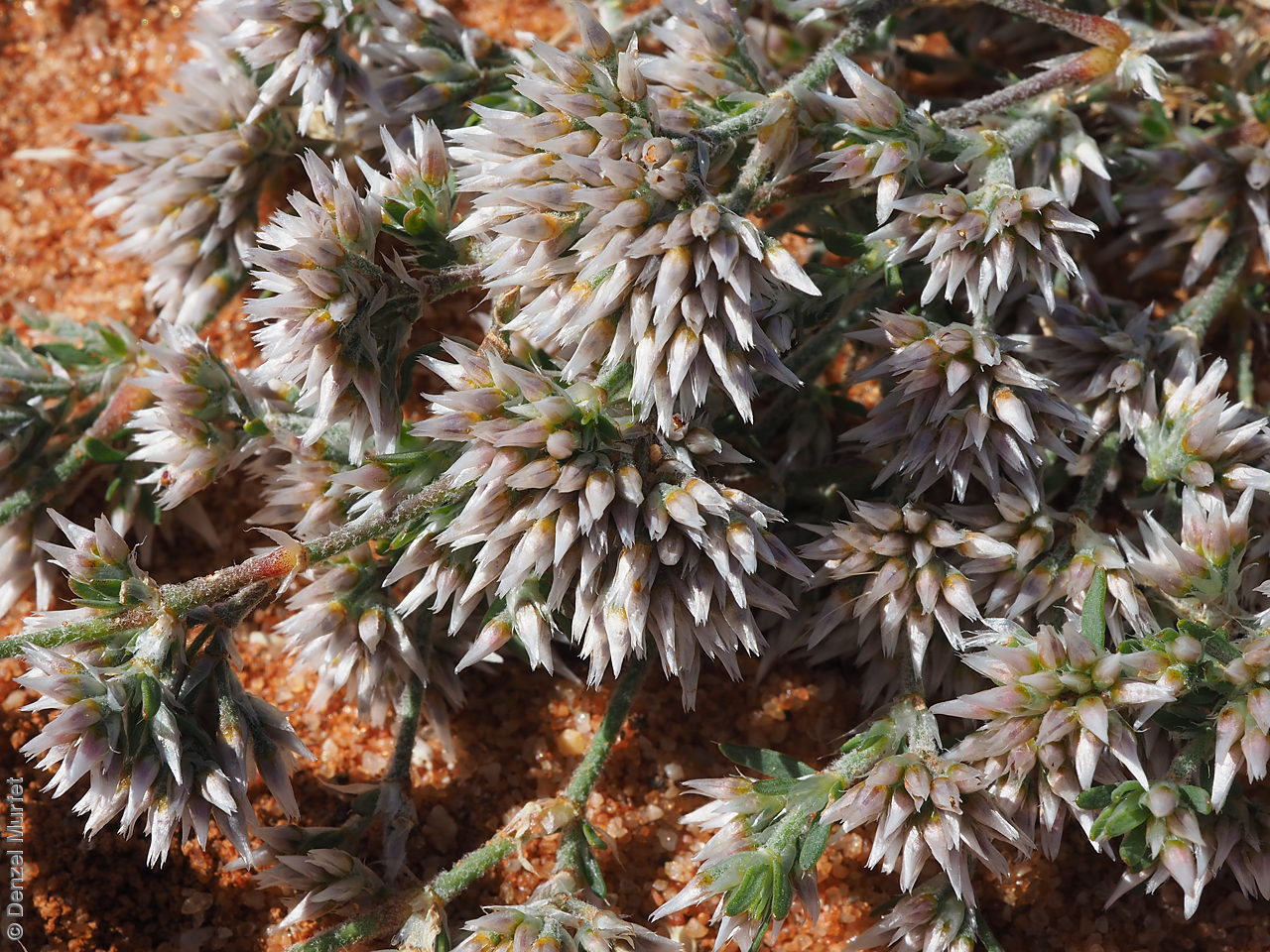
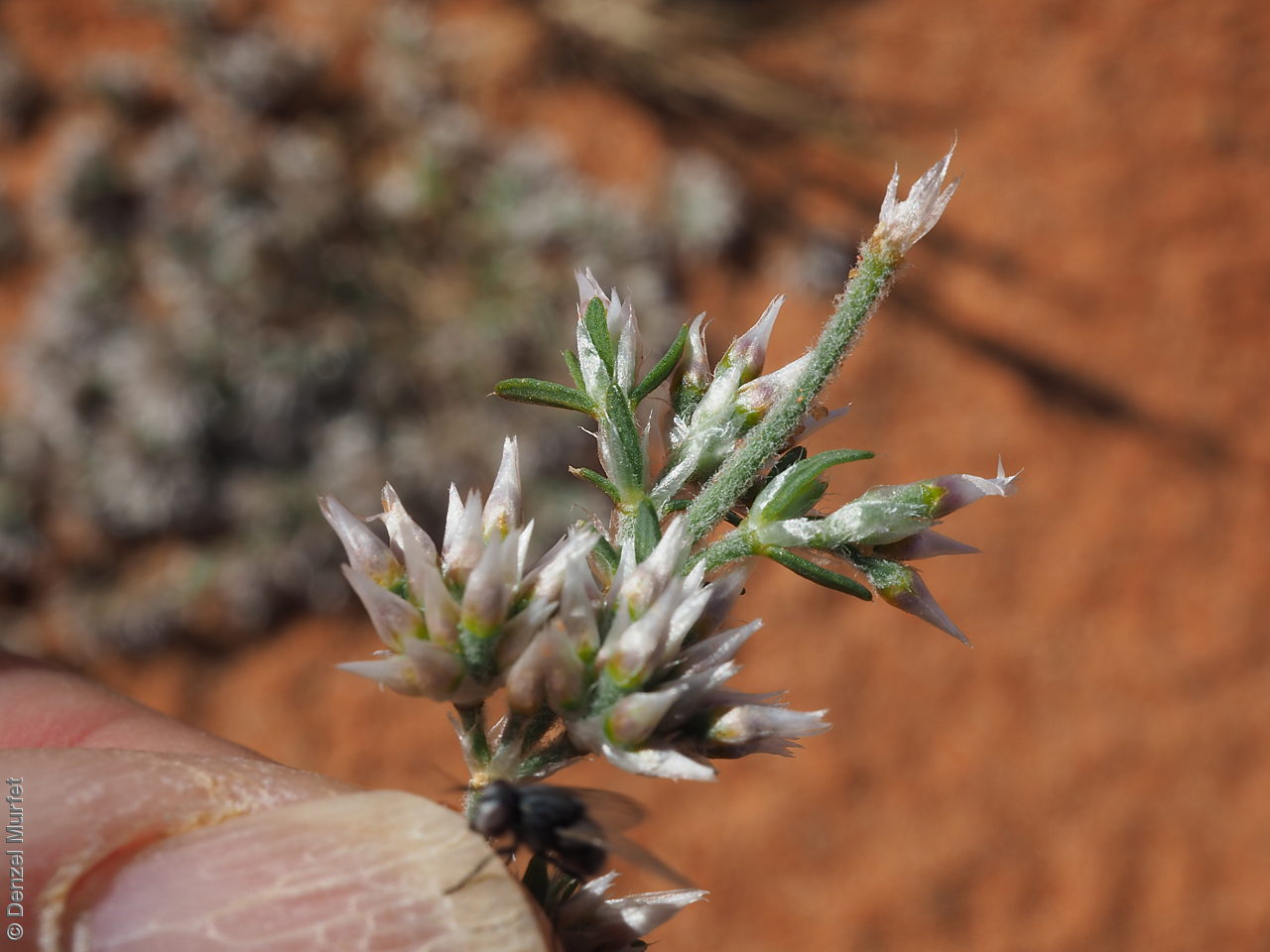
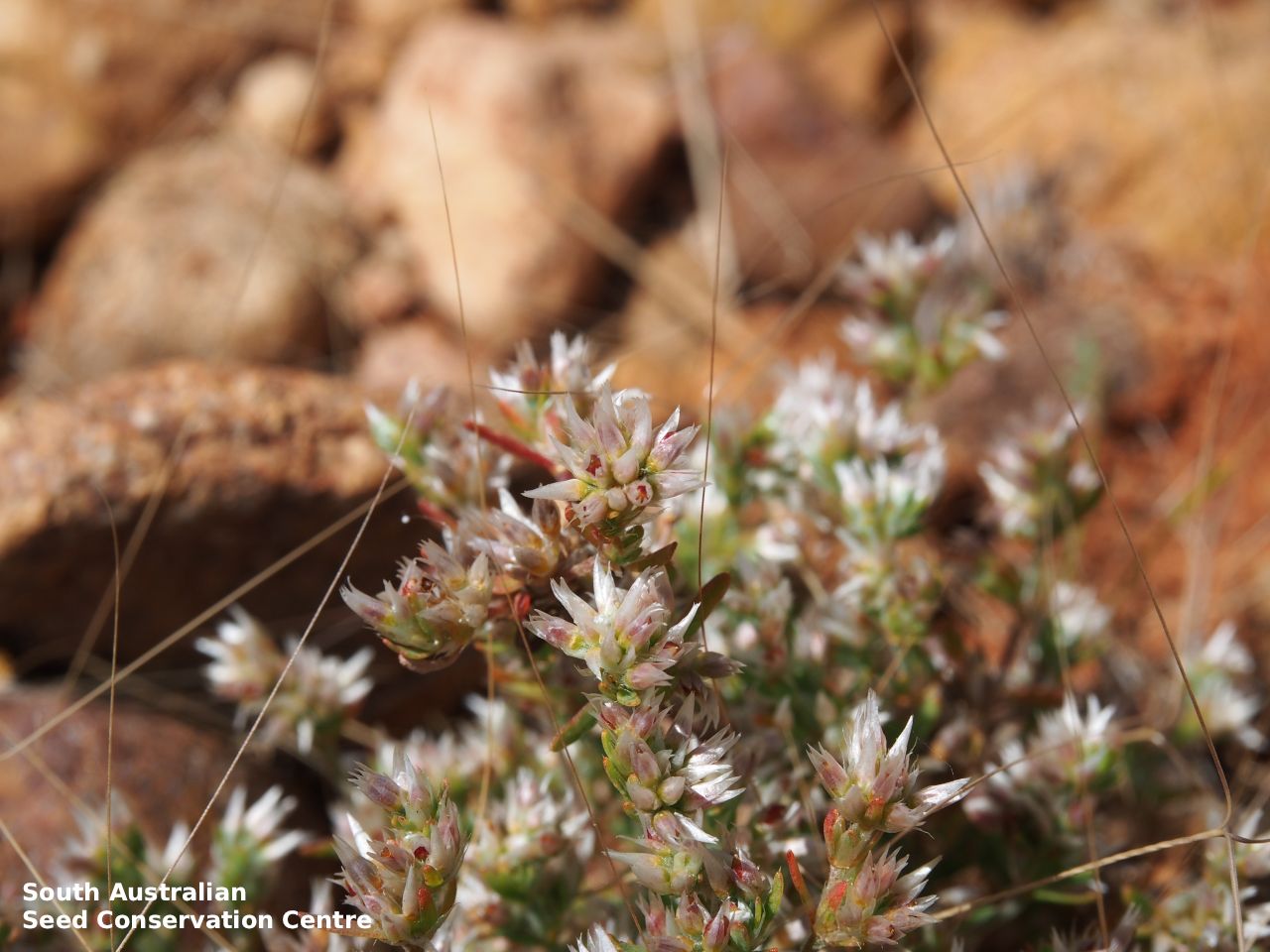
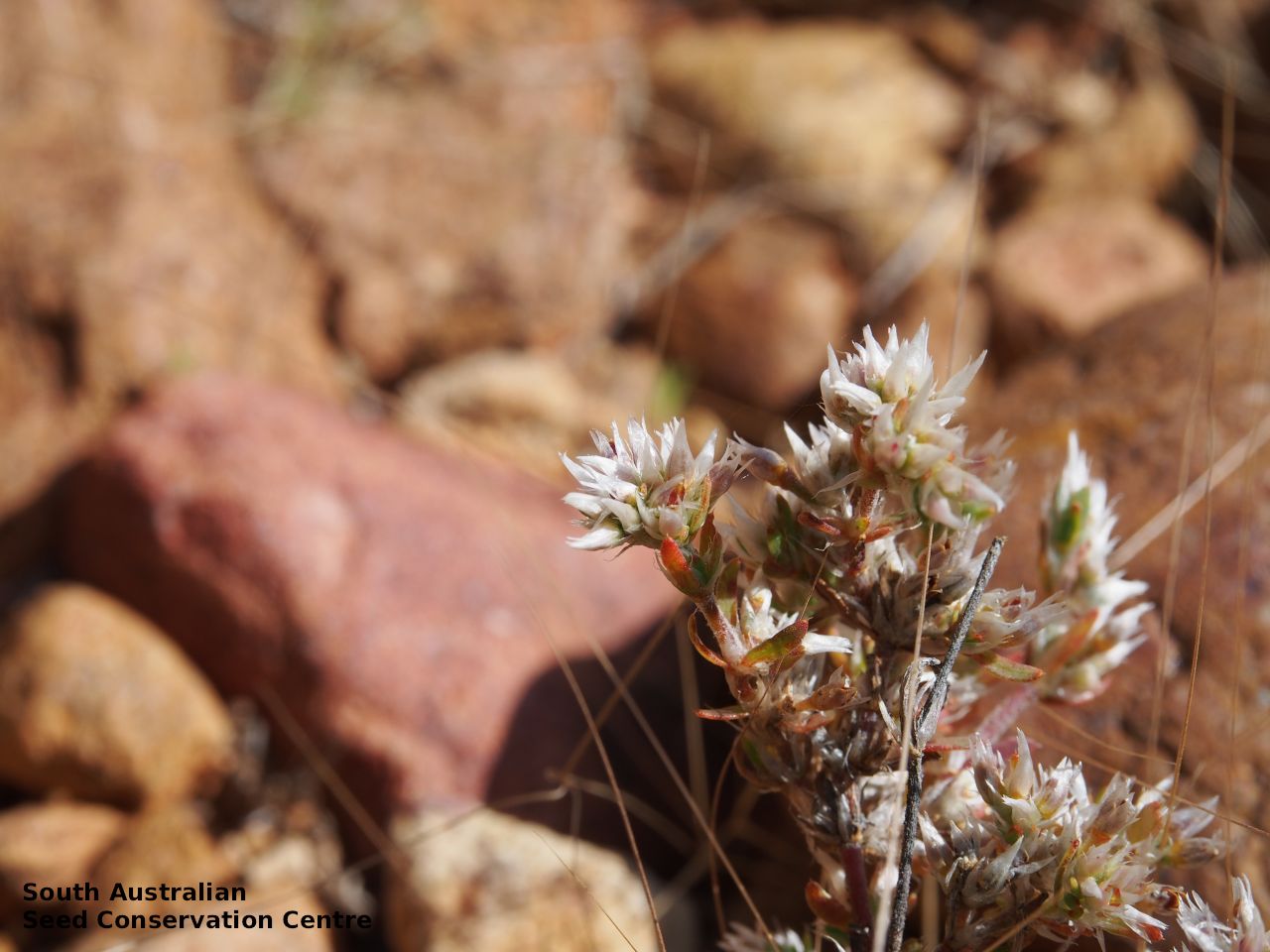
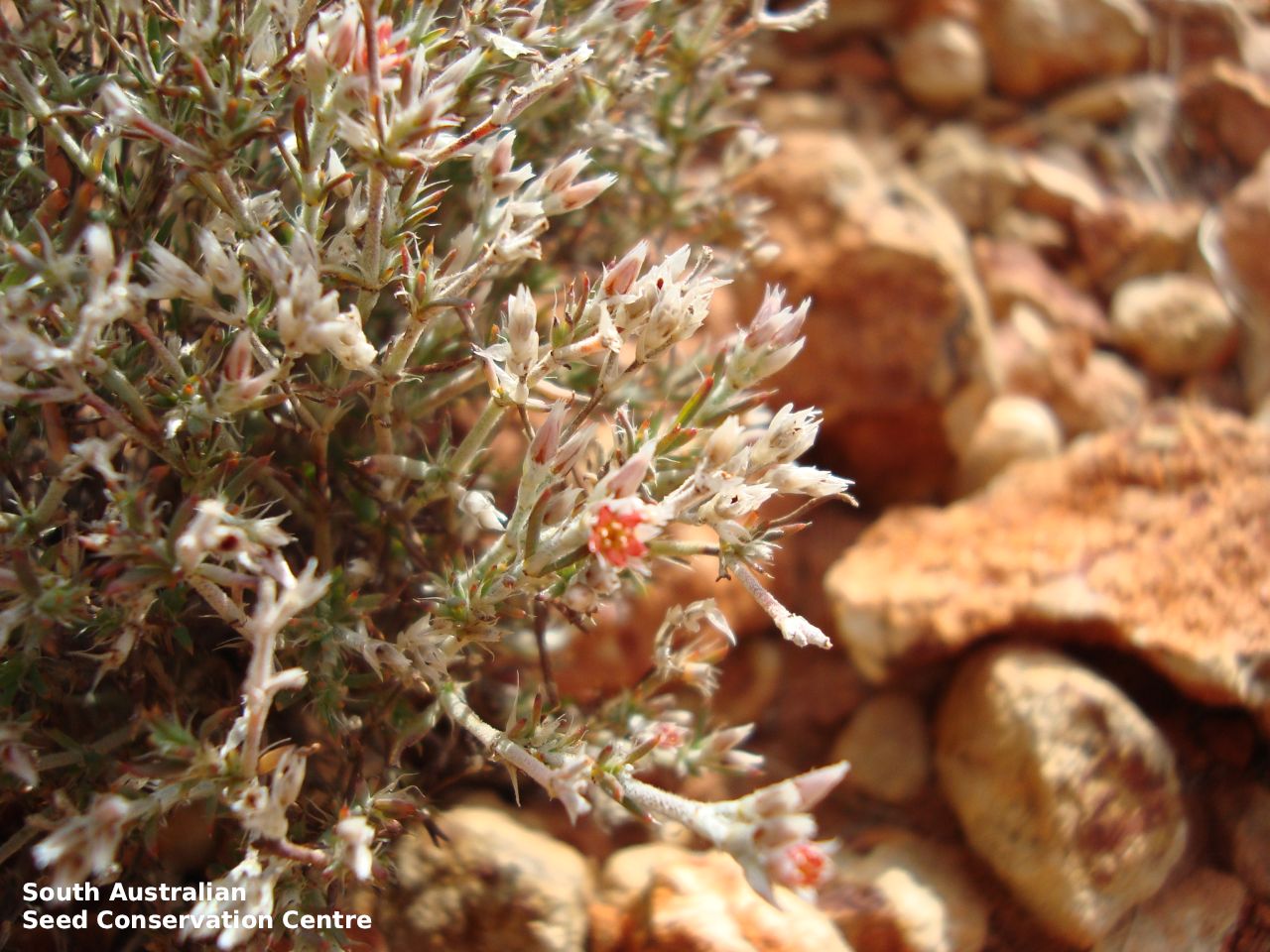
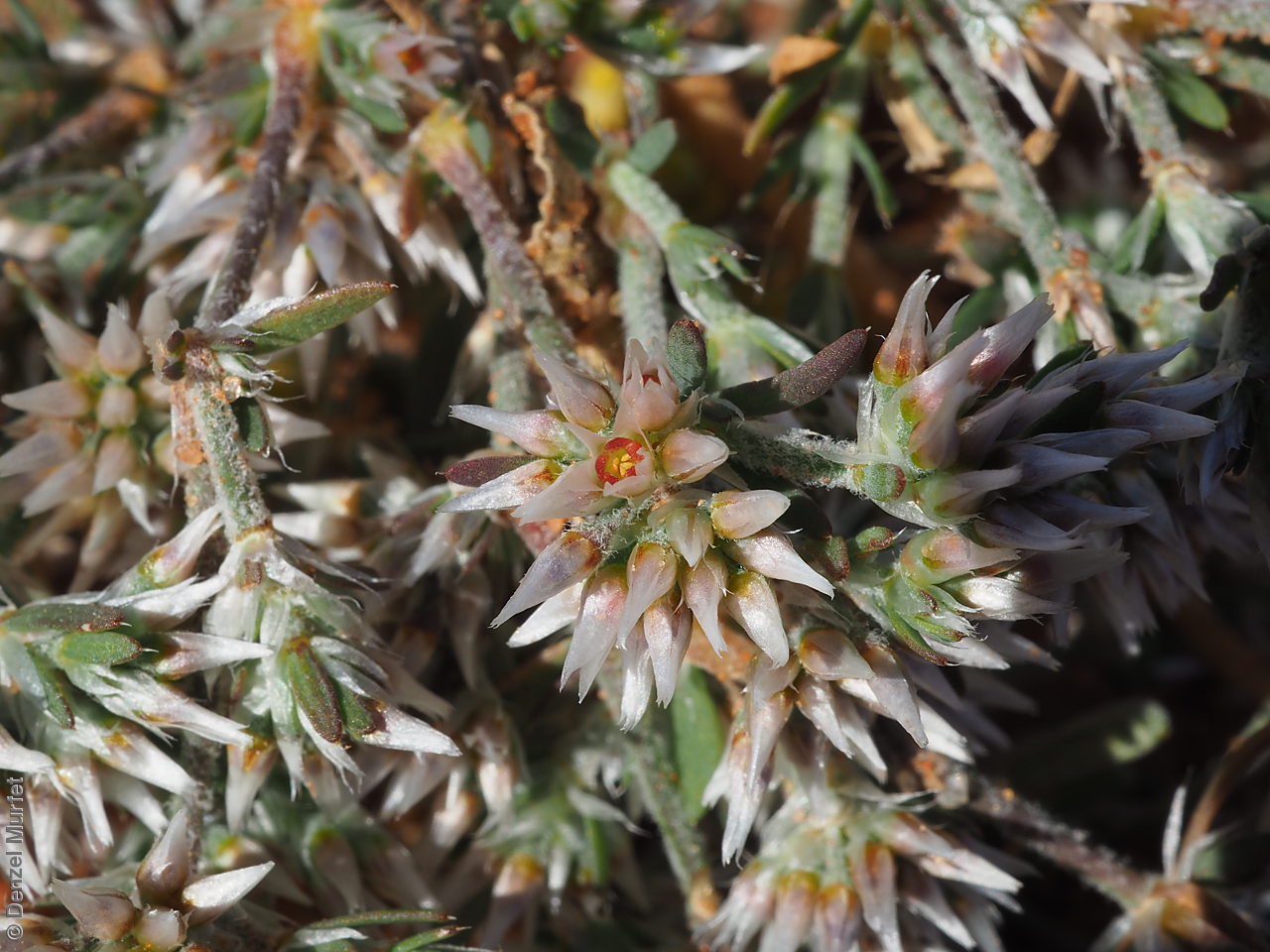
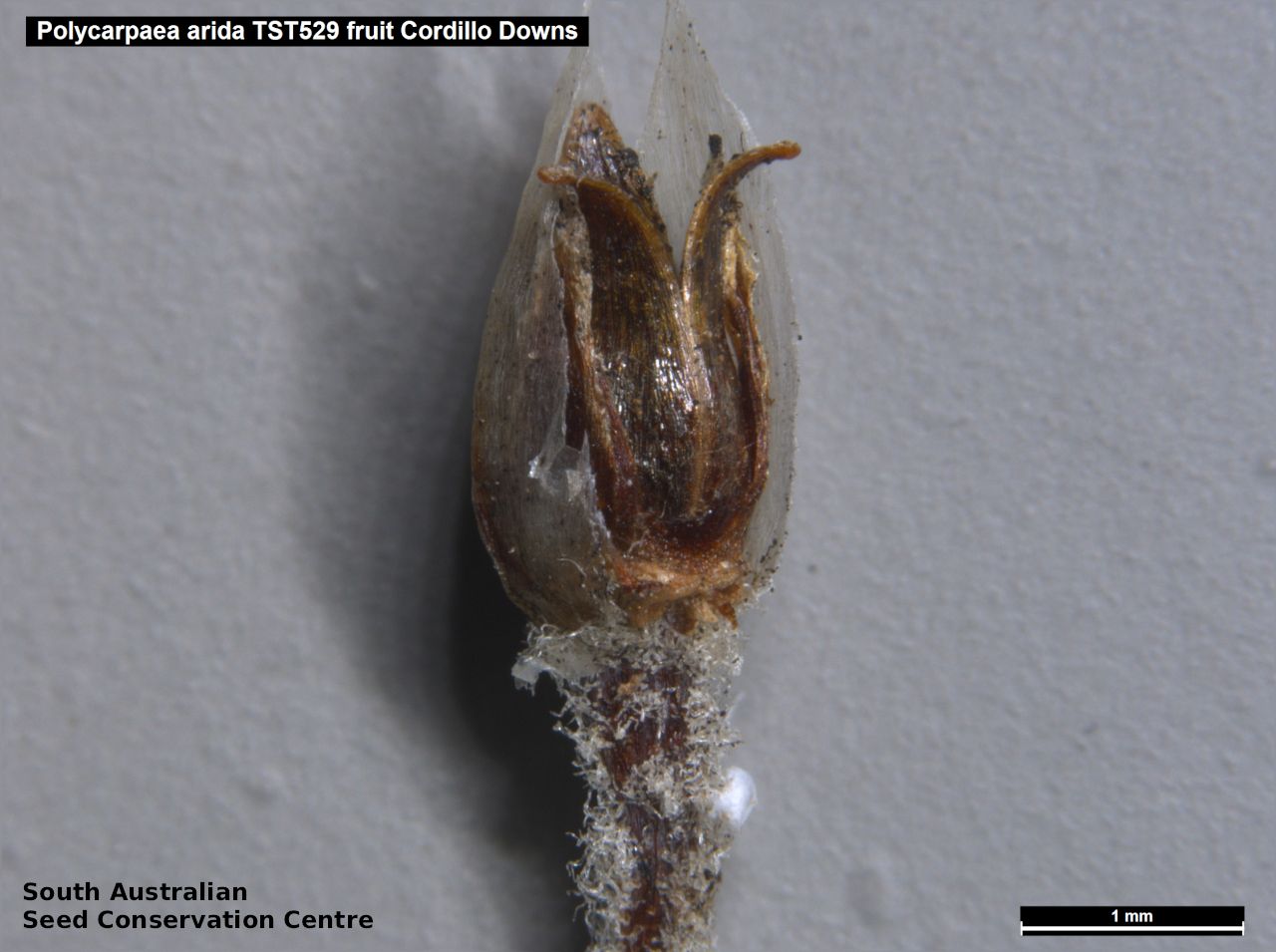
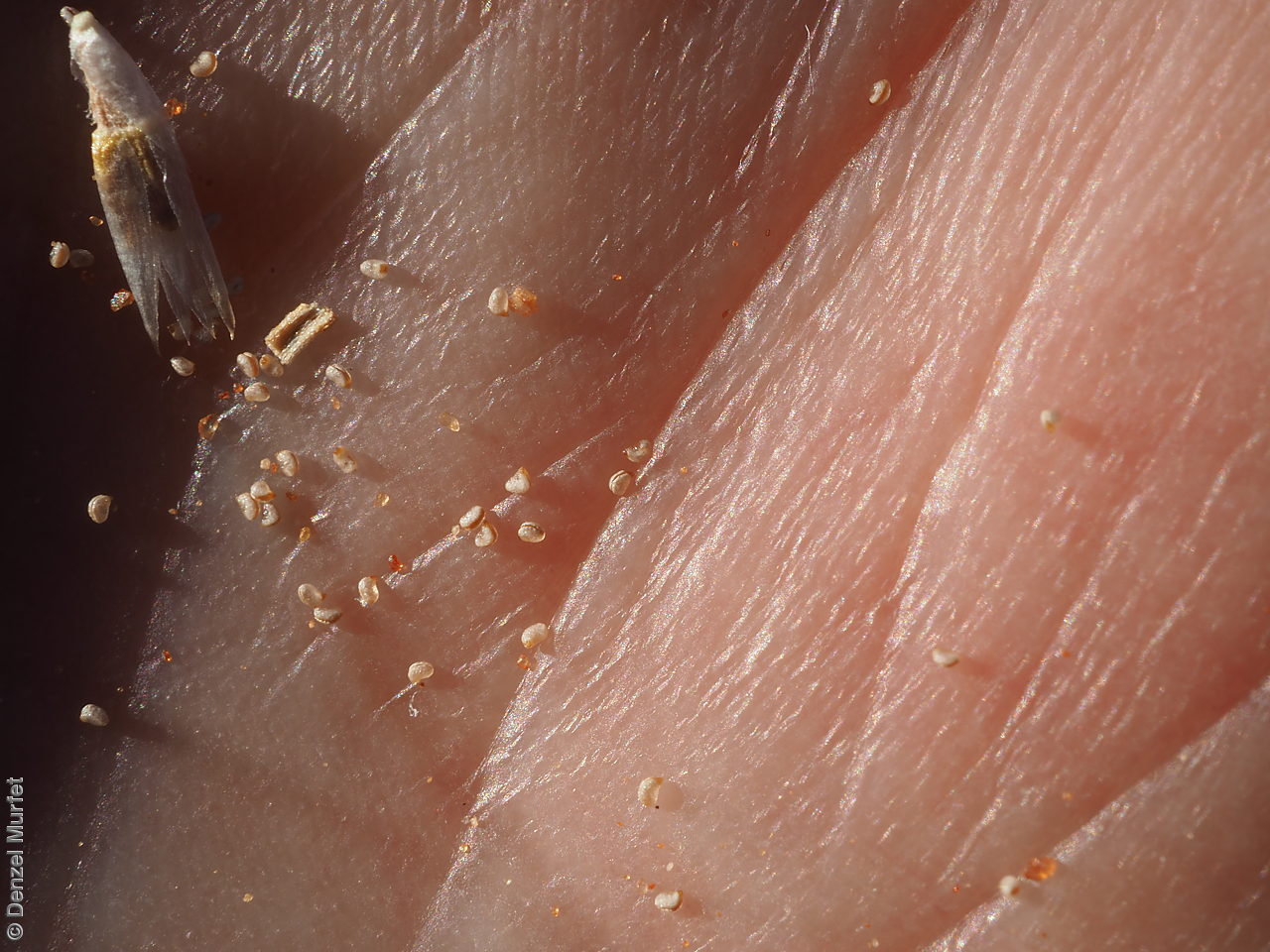
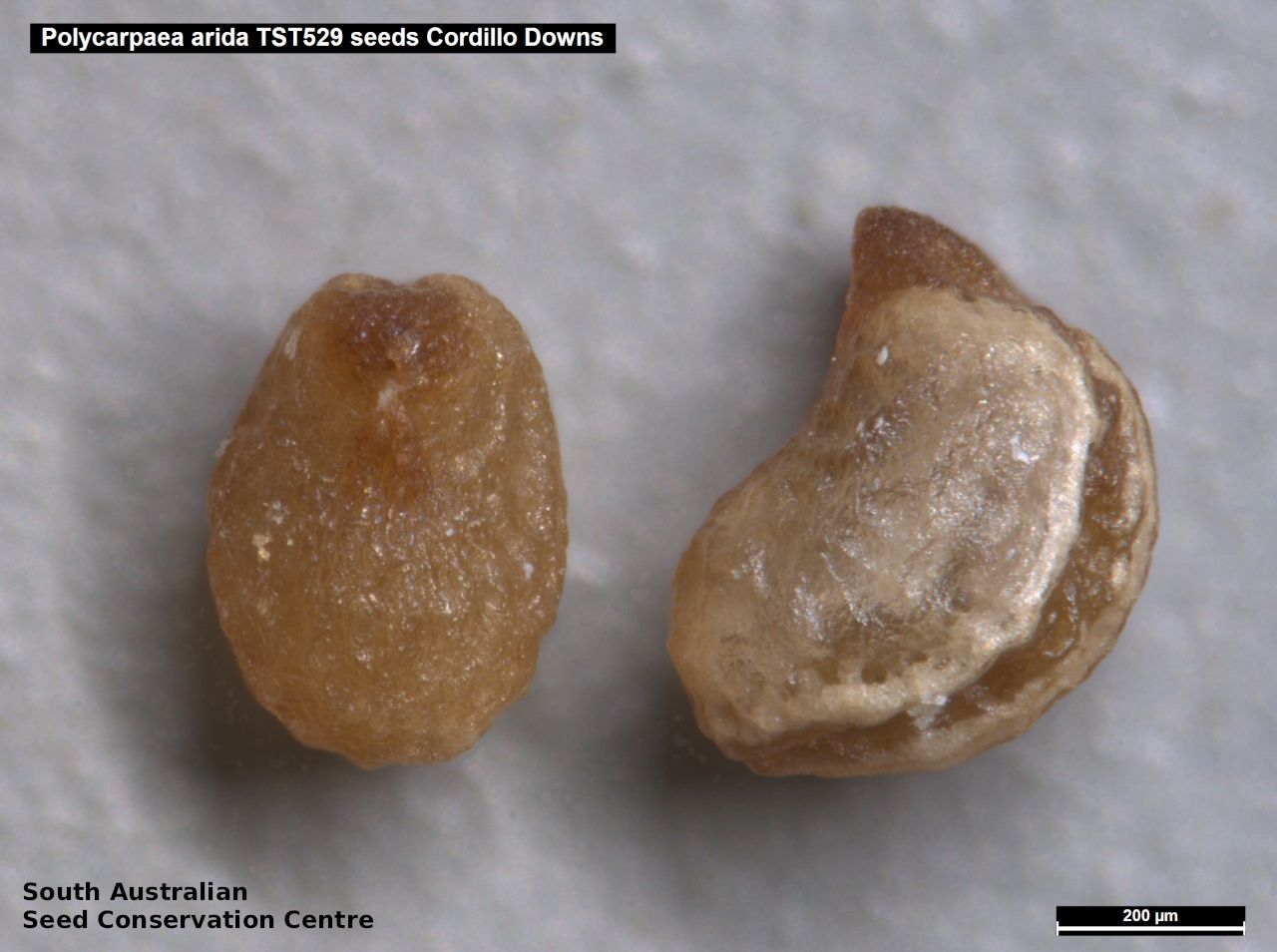

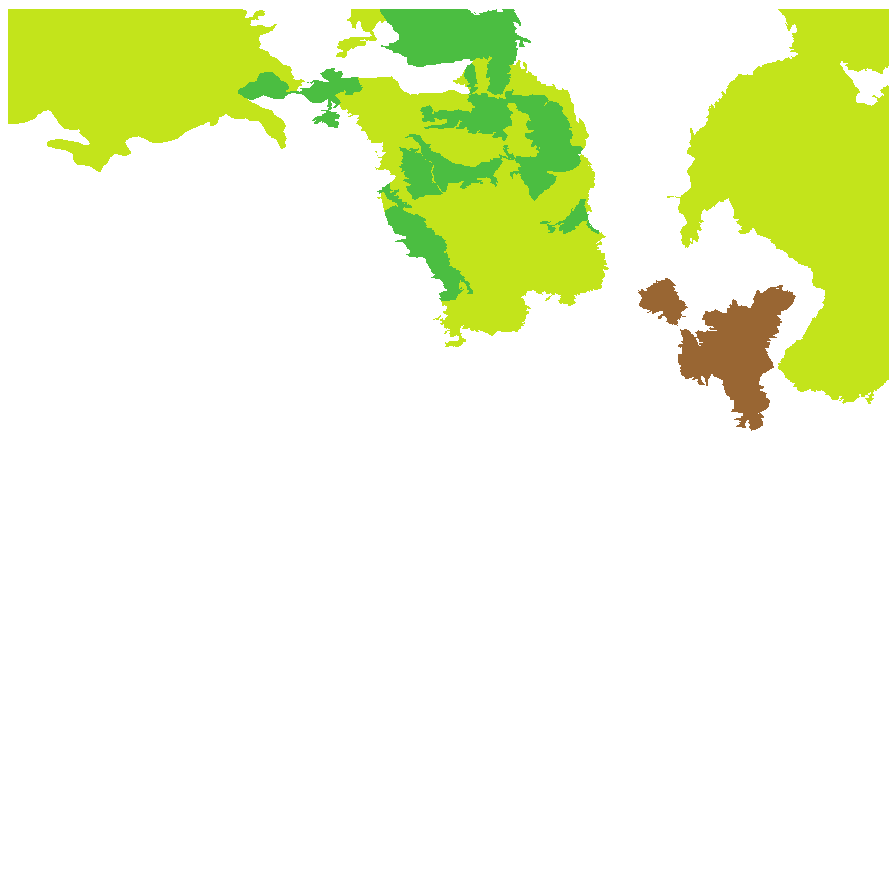
Botanical art
Prior names
Polycarpaea corymbosa
Common names
Inland Copper Plant
Etymology
Polycarpaea from the Greek 'polycarpos', the name of some plants and derived from 'polys' meaning many and 'carpos' meaning fruit. Arida from the Latin 'aridus' meaning dry; alluding to the species arid habitat in the centre of Australia.
Distribution and status
Found in the far northern part of South Australia, growing on top of breakaways and along drainage lines. Also found in Western Australia, Northern Territory, Queensland and New South Wales. Native. Common in South Australia. Uncommon in Western Australia, Queensland and New South Wales. Common in Northern Territory.
Herbarium regions: North Western, Lake Eyre, Flinders Ranges
AVH map: SA distribution map (external link)
Plant description
Perennial herb with short and procumbent or somewhat erect stems to 10 cm long, stems covered in white hairs. Leaves linear to linear-lanceolate, mucronate, often clustered, glabrous, to 1 cm long. Flowers terminal of stems in forked groups with short copper red and white petals. Flowering throughout the year. Fruits are brown ovoid capsule to 2 mm long, opening by 3 valves. Seeds are translucent brown ovoid brown seed to 4 mm long and 3 mm wide. Seed embryo type is peripheral.
Seed collection and propagation
Collect seeds between January and December. Collect heads that are drying off and turning brown, these should contain small brown seeds. Place the heads in a tray and leave to dry for 1 to 2 weeks. Then rub the dried heads with a rubber bung to dislodge the seeds. Use a sieve to separate any unwanted material. Be careful as the seeds are very small. Store the seeds with a desiccant such as dried silica beads or dry rice, in an air tight container in a cool and dry place.
| Location | No. of seeds (weight grams) | Number of plants | Date collected | Collection number Collection location | Date stored | % Viability | Storage temperature |
|---|---|---|---|---|---|---|---|
| MSB | 13,000 (1.2 g) | 20+ | 30-Aug-2008 | DJD1159 Lake Eyre | 90% | ||
| BGA | 21,300 (1 g) | 25 | 23-May-2012 | KHB682 Flinders Ranges | 1-Jan-2016 | 75% | -18°C |
Number of plants: This is the number of plants from which the seeds were collected.
Collection location: The Herbarium of South Australia's region name.
% Viability: Percentage of filled healthy seeds determined by a cut test or x-ray.